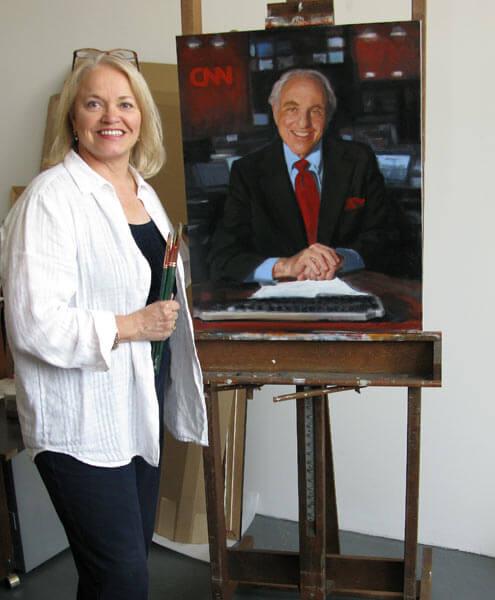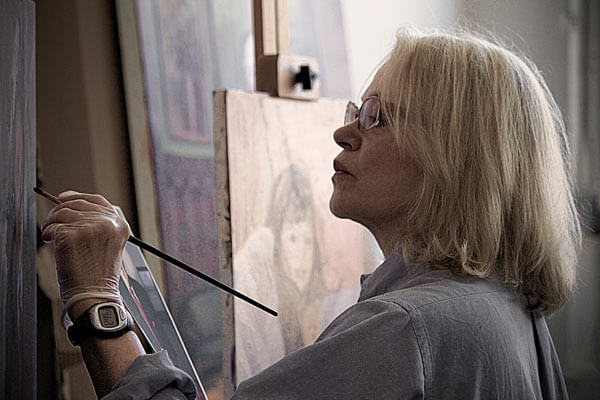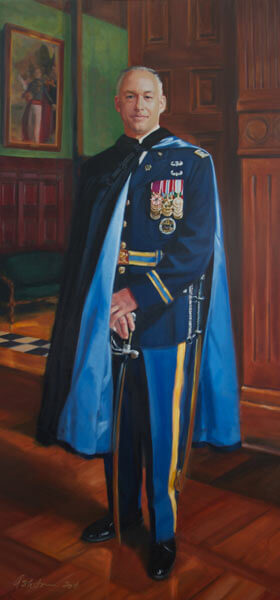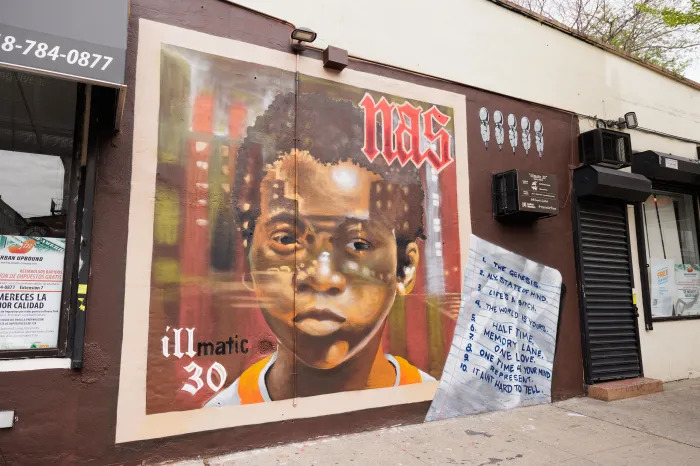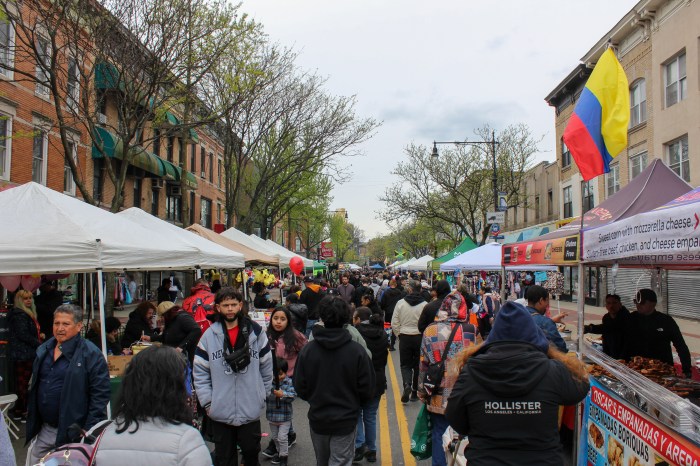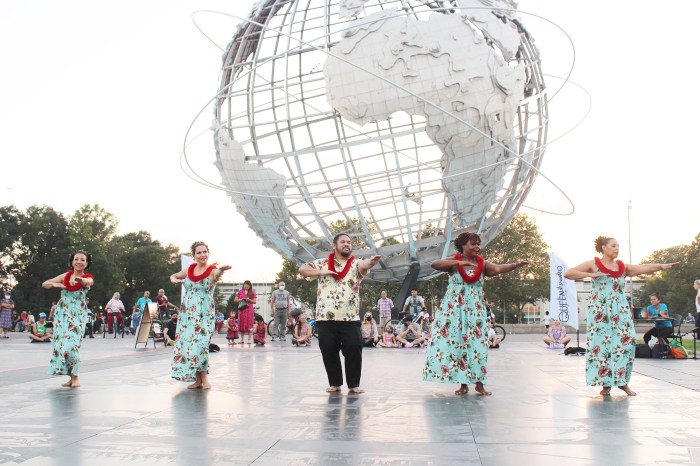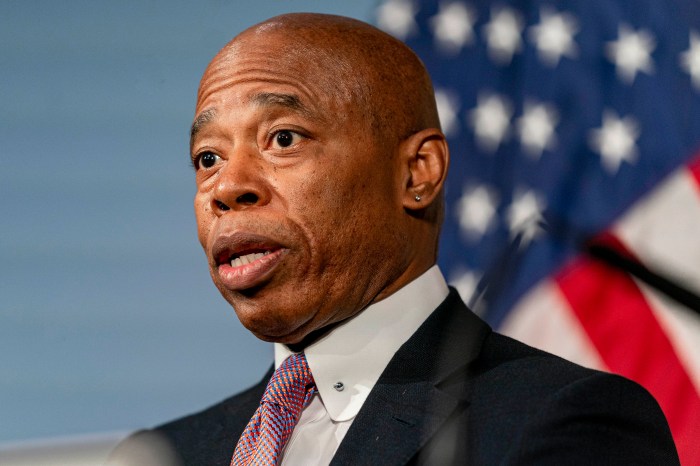By Allison Plitt
Long Island City painter Betsy Ashton has never been one to back away from a challenge. During the 1970s and ‘80s she was a radio and television news reporter in an era when very few women worked in the field. She began her journalism career in Washington, reporting on the emerging women’s movement, and was the only reporter — to her knowledge — to ever do her own courtroom sketches. She moved to New York City in 1982 to become a reporter and, eventually, editor of the CBS Morning News.
But while Ashton had a successful 20-year career in broadcast journalism, her college education was in the fine arts. After receiving a bachelor’s of art degree in art and design from American University in 1966, she spent the next six years in arts-related professions. She taught art to high school students, worked as an advertising artist and a cartoonist and even taught art on a television show that she produced.
Since she saw herself mainly as a portraitist, Ashton stepped away from the art scene in 1971 during a time when galleries were gravitating toward artists considered to be abstract expressionists who used abstract form and expressive color to communicate with their viewers.
“In the late ‘60s, it seemed that the only thing people were interested in in the art world was Jackson Pollock and Mark Rothko,” she said. “Now I have nothing against stripes, but my attitude was if that was where the art world was going, I’m not going to put my head up against a wall. I like figures. I like people. I’m out of here.”
Four decades later, there has been a resurging interest in portraiture, which has allowed Ashton to resume the career she once abandoned. In 2006, she ran into an old friend, Everett Raymond Kinstler, a master portrait artist who encouraged her to return to painting. Ashton agreed to take on the challenge as long as Kinstler played the role of her mentor.
At Kinstler’s urging, Ashton has been able to hone her skills by studying the techniques of other master portraitists. At the National Academy School of Fine Arts in Manhattan, she has taken classes taught by Mary Beth McKenzie and Sharon Sprung. She has traveled to Nashville, Tenn. to study with Kinstler’s protégé, Michael Shane Neal, and she recently took a workshop with Nelson Shanks in New York City.
Ashton believes her experience as a reporter has enhanced her ability to get to know clients better and paint more personal portraits. “Maybe it’s just my natural gregariousness that helps. I am not the shy, retiring type,” she said. “I like communicating and working with people and that is perfect for doing this kind of art because the more I can draw out the person, the more I observe them. I don’t pose them. I watch them.”
Using the same approach on all her clients, Ashton first interviews them. “I want to know who they are,” she said. “I want to know if there is a special place that is in their heart that means something.”
After Ashton and her client decide on the location for the portrait, they go to the site to scout a spot for a photo shoot.
As soon as Ashton begins taking pictures, she and her client talk to each other. “I get them very relaxed, very comfortable and the body becomes relaxed and natural,” she said. “My people are never stiff. They never look posed. They look comfortable in their skin and I’m able to draw out their real personality. It’s an interviewing skill that was honed over years as a radio and television news correspondent.”
The next step for Ashton is to do a live sketch of her client, but it is usually not at the same location of the photo shoot. “It’s important that they give you a little bit of time in real life — that I can do one real live sketch, at least, because two eyes are much better than that one eye of the camera,” she said. “You get much more depth and you get the colors right.”
Working from the photos and the live sketch, Ashton also admits to experimenting with both color and subject matter to create a more realistic representation.
For example, in her painting of U.S. Army Lt. Col. Thomas Pike, Jr. in the Park Avenue Armory, where he was once a cadet, Ashton describes the techniques she uses to compose the full portrait.
“This is the actual photograph of the body, but he has a more stern, severe look. I didn’t like that. He’s a warm personality. That’s why we put this head on this body,” she pointed out. “I actually started painting the Armory with warmer wood and then I decided to darken it and bring these colors up. So you play with it.”
Not counting the time it took to scout the location, and photograph and sketch Pike, Ashton spent 75 hours painting his portrait. She acknowledged, however, that other portraits take less amount of time to paint.
Ashton intends to enter the portrait of Pike into national competitions. In the meantime, she is happy to “just keep painting” and remains tirelessly inspired by the New York art community.
Besides joining artist associations in Manhattan such as the National Arts Club and the Salmagundi Club, she loves living in Long Island City where she commutes 10 minutes by foot to her studio in the Reis Studios building.
“Long Island City seems to be just bursting with artistic activity. I love it,” she said. “This block in which Reis Studios are on, there are a thousand artist studios here doing everything imaginable. There are a lot of really contemporary painters and there are a lot of people doing films. It’s thrilling.”
For more on Ashton and her artwork, visit www.ashtonportraits.com or call 347-703-4600.

